En este proyecto, aprenderás a implementar una solución simple de Glassware que muestra la funcionalidad principal de la API de Google Mirror.
Para ver una demostración completamente funcional del proyecto de inicio rápido, ve a https://glass-python-starter-demo.appspot.com. De lo contrario, continúa leyendo para ver cómo implementar tu propia versión.
Requisitos previos
El SDK de App Engine para Python: El proyecto de inicio rápido de Python se implementa con App Engine. Necesitas el SDK de Python para App Engine para desarrollar y, luego, implementar tu proyecto. Ejecuta el instalador si corresponde para tu plataforma o extrae el archivo ZIP en un lugar conveniente.
Crea una instancia de Google App Engine
Deberás alojar el proyecto de inicio rápido en una instancia de Google App Engine:
- Ve a http://appspot.com.
- Haz clic en Crear aplicación y crea una instancia pública de Google App Engine alojada en
appspot.com. - Asígnale un Identificador de aplicación a la aplicación y deja la autenticación Abierta para todo Google. Usuarios de cuentas. Necesitarás el identificador de aplicación más adelante para configurar el proyecto de inicio rápido.
Cómo crear un proyecto en la Consola de APIs de Google
A continuación, habilita el acceso a la API de Google Mirror:
- Ve a la Consola de APIs de Google y crea un proyecto de API nuevo.
- Haz clic en Servicios y habilita la API de Google Mirror para tu proyecto nuevo.
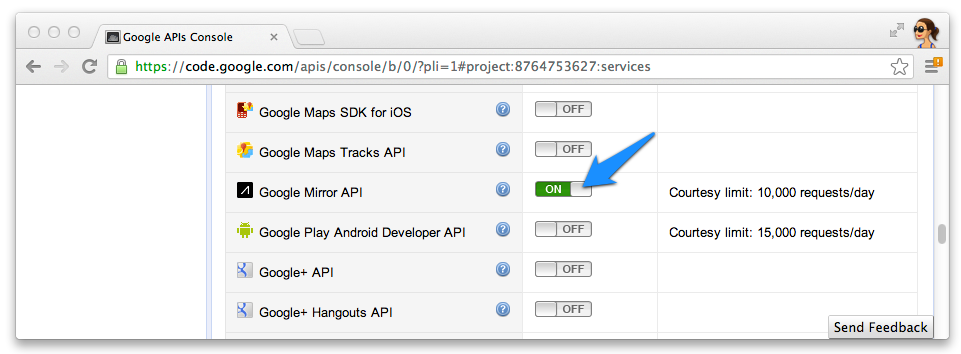
- Haz clic en Acceso a la API y crea un ID de cliente de OAuth 2.0 para una aplicación web.
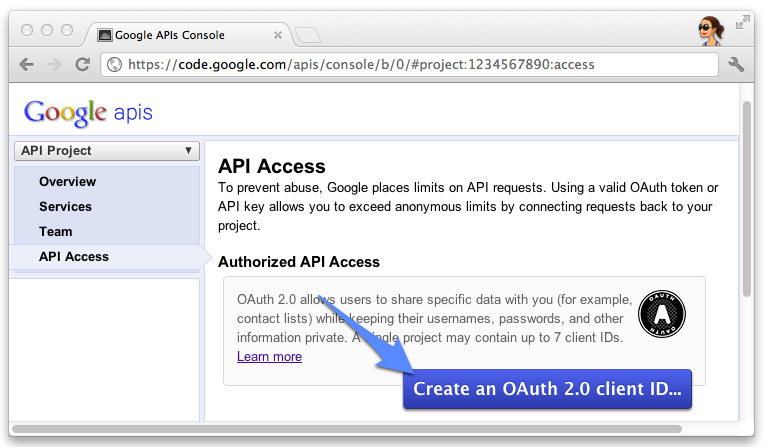
- Especifica el nombre y el ícono del producto para tu Glassware. Estos campos aparecen en el permiso de OAuth
pantalla que se presenta a los usuarios.
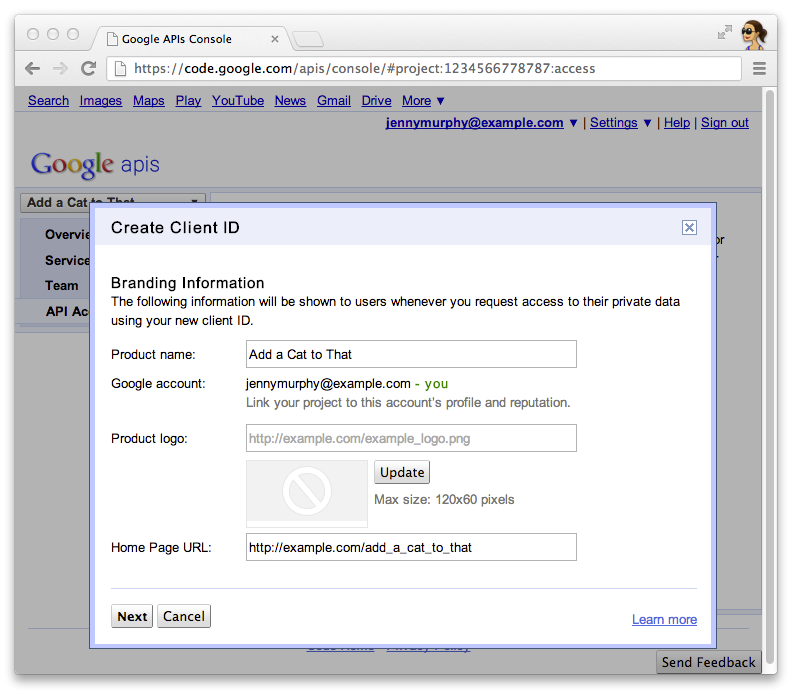
- Selecciona Aplicación web y especifica cualquier valor para el nombre de host, como
localhost.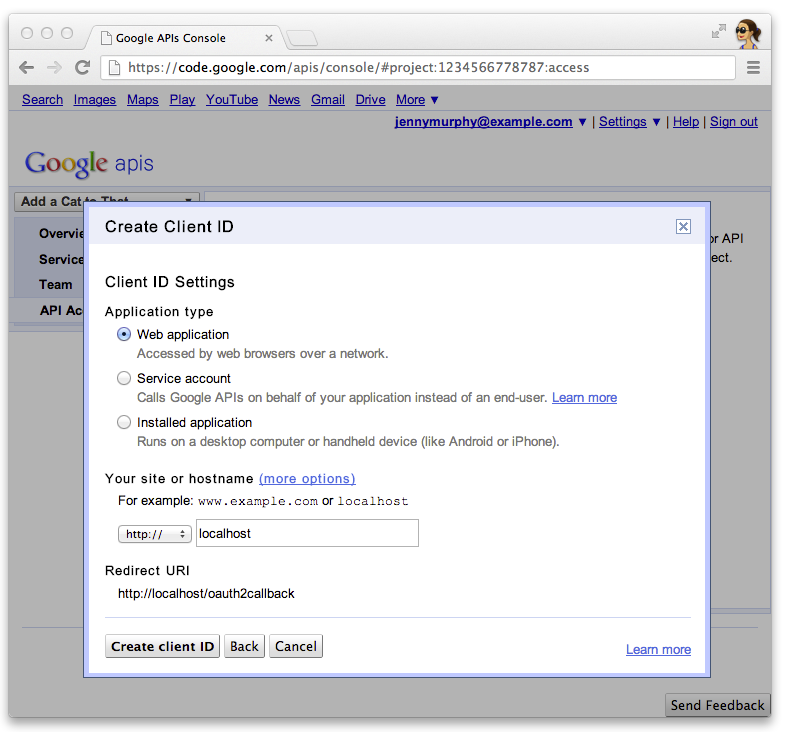
- Haz clic en Edit settings... para que el ID de cliente especifique los URI de redireccionamiento. Especificar
http://localhost:8080/oauth2callbacky la URL de devolución de llamada de App Engine por ejemplo,https://myappengineinstance.appspot.com/oauth2callback.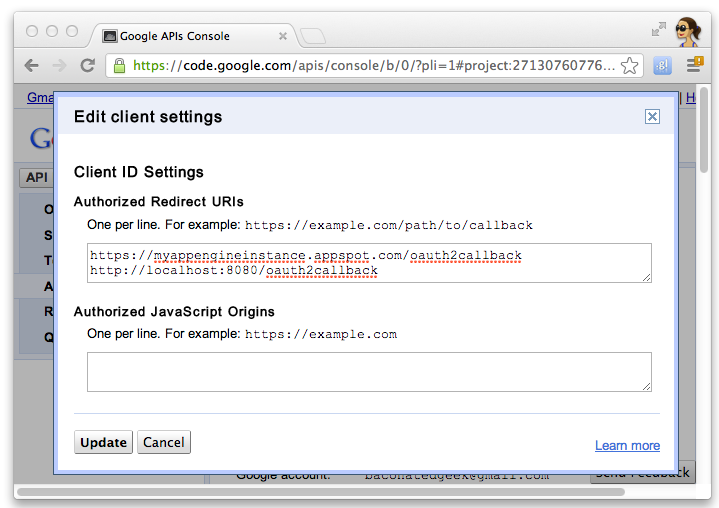
- Toma nota del ID de cliente y el secreto de la Consola de APIs de Google. Necesitarás
para configurar el proyecto de inicio rápido.

Configurar el proyecto
Configura el proyecto de Inicio rápido para usar la información de tu cliente de API:
- Ingresa tu ID de cliente y secreto en
client_secrets.json:{ "web": { "client_id": "1234.apps.googleusercontent.com", "client_secret": "ITS_A_SECRET_TO_EVERYBODY", "redirect_uris": [ ], "auth_uri": "https://accounts.google.com/o/oauth2/auth", "token_uri": "https://accounts.google.com/o/oauth2/token" } }
- Genera un archivo
session.secretpara almacenar las cookies de sesión:$ python -c "import os; print os.urandom(64)" > session.secret
- Edita
app.yamlpara ingresar el ID de la aplicación de App Engine:application: your_app_engine_application_id version: 1 runtime: python27 api_version: 1 threadsafe: true ...
Implementa el proyecto
Presiona el botón azul Implementar en la interfaz de inicio de la GUI de App Engine o ejecuta esta shell para implementar el código:
$ appcfg.py --oauth2 update .

